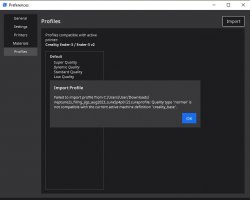.
• Advance warning -- design change
I was being a bit defeatist a few days ago. Having set my heart on dry assembly without messy, smelly adhesives I decided to go back to the beginning and have a rethink. I pulled out some sketches for
snap-fit plugs from a couple of years ago.
At that time I rejected this idea as unworkable with the much thinner timbers I was trying to use to be compatible with existing flexi-track. And also because it obviously won't work with laser-cut plywood.
But as I think those wanting plywood have accepted the need for glued assembly, and the timbers are now much thicker to allow for the loose jaw pins, it seemed worth having another go at snap-fitting chairs for FDM (and maybe resin) timbers:
The plugs are redesigned with side tangs which clip into a recess in the side of the socket. Unlike the existing
press-fit bash-fit plugs, with these
snap-fit plugs once clipped in place there is no residual stress on the timber. The plug is an easy fit in the socket with much less need for very close tolerances. But not too easy of course, otherwise we won't maintain the track gauge with sufficient accuracy.
Having a recess in the side of the socket means that some socket walls are even thinner than before, but still just about acceptable I think. They need to be thin enough to flex anyway, as the plug is clipped down into place.
I've made some test prints, and so far they are working very well. The chairs snap into position with a satisfying click.

Be warned however, that once fitted there is no way to remove them without destroying them, so don't get them in the wrong socket or the wrong way round ! Some felt-tip marker lines along one end of the plugs while still on the raft will be very helpful when fitting them.
• If I decide to make this design the default it means these chairs and 3D-printed bases won't be compatible with any previous stock you have made. If you want to go on making the existing designs, for laser-cut bases maybe, you will need to change yet another option setting:
It's possible this design will push-fit into laser-cut ply ok, so not needing to swap designs for laser. But it's obviously not going to clip into plywood and will need some glue to retain it.
I'm going to make up a full turnout before finally deciding to switch the default design, but as of this evening it's looking very promising. Thanks all for the encouragement, it makes all the difference to me.
cheers,
Martin.
 Search
Search


